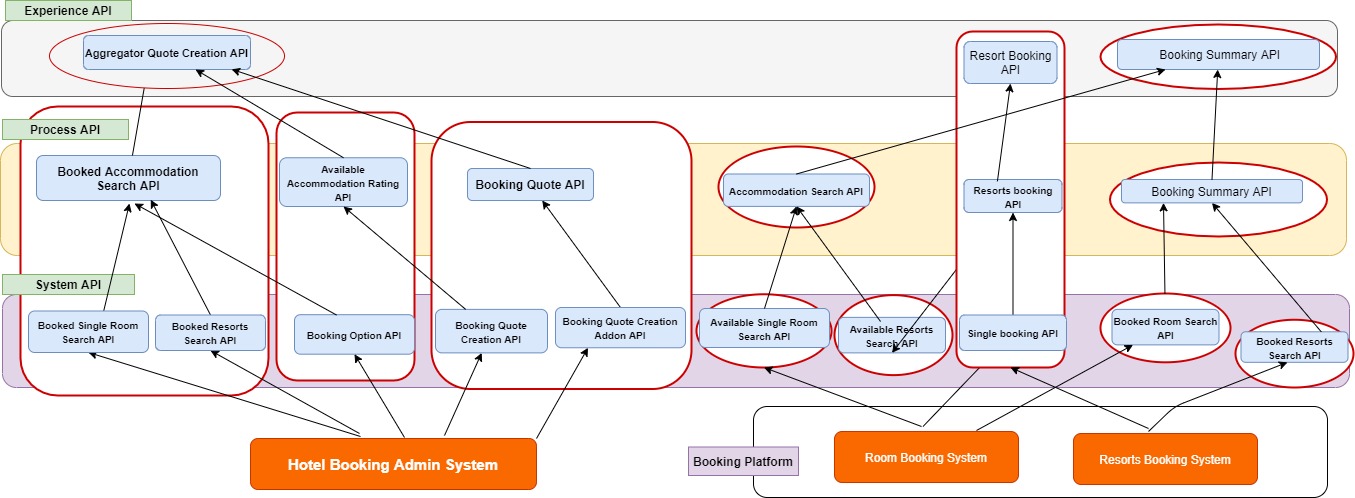Distinguishing Bounded Contexts in a Hotel's Booking Application System (Anypoint Platform)
An analysis of the booking system found in hotels, summarizing the grouping of involved APIs within the same Bounded Context Model.
Join the DZone community and get the full member experience.
Join For FreeAssume that we have already identified a wide number of APIs (as seen below in Fig 1.0).
- Outline the edges of significant Bounded Contexts so that:
- Each API applies to precisely one Bounded Context.
- There is larger than one Bounded Context overall (with no Enterprise Data Model).
- Recognize the defining API data types for every Bounded Context and verify that they refer to all APIs in that Bounded Context.
- Review the implications of the distinguished Bounded Context Data Models for:
- Coordination between the teams responsible for the APIs in each Bounded Context.
- Data conversion when APIs in various Bounded Contexts bid each other.

Figure 1.0
The rooms and resorts booking quote process—although both completed by the same embedded system—are distinct Bounded Contexts, not only because they serve different teams within hotel booking but also because they are implemented by different data schema and database tables in the hotel booking admin system.
Furthermore, rooms and resort bookings are confirmed by significantly various thoughts and companies and fall into various Bounded Contexts.
Booked accommodation search, on the other hand—although implemented differently in the hotel booking admin system for room and resort accommodations—deals with a concept that should be reasonably identical among room and resorts underwriting and can be assigned to the same Bounded Context.
Furthermore, accommodation options retrieval and ranking are two procedural operations on the identical theory and can be grouped into one Bounded Context.
Accommodation quote creation is separated in the hotel booking admin system into new and add-on business, but this is not reflected in how the business thinks of accommodation booking quotes, which groups deal with them, and how they are represented as API data types. The involved APIs, therefore, belong to the same Bounded Context, as displayed in Fig 1.1

Figure 1.1
Opinions expressed by DZone contributors are their own.

Comments